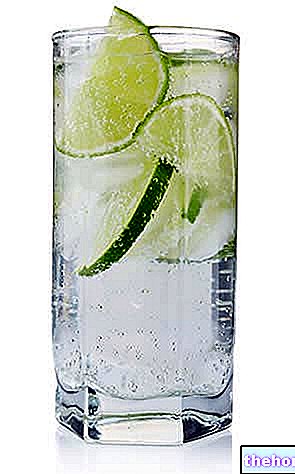Generality
Hemp seed flour - more simply called hemp flour - is a food obtained by grinding the seeds of Cannabis sativa L.

Hemp seed flour is a "dough" ingredient, which can be very useful in the diet against celiac disease. It is also appreciated for the nutritional content of molecules useful to the body, such as essential fatty acids, fibers, vitamins and certain amino acids.
Hemp flour is a product in its own right and differs from both hemp milk production waste (called okara), and from the scraps of the decortication of whole seeds. Furthermore, although it is obtained by processing the so-called cake (what remains from the squeezing of the seeds by extracting the oil), the two terms cannot be considered “synonyms”.
The hemp-based food products available on the market today are: whole hemp seeds, shelled hemp seeds, hemp seed oil, hemp seed milk (Hemp milk), hemp drinks (Hemp drink), tofu seeds hemp, hemp okara and hemp protein flour (50% protein).
Nutritional contribution
Hemp flour is a food that provides over 21% fewer calories than the more famous type 00 wheat flour. These calories are also distributed differently, since in hemp flour as much as 49.5% of the " energy comes from proteins (the main energy nutrient), while in wheat type 00 89% of the calories are provided by complex carbohydrates.
The hemp seed flour proteins do not include gliadin and glutenin (therefore gluten), so the food is perfectly tolerated by celiacs.
The main peptide component - called edestin (typical of legumes) - contributes mainly to the total protein intake, equal to about 30% of the total mass.
The peptides appear to be of medium-high biological value, since they provide (in significant quantities) all the essential amino acids. In this regard, in the vegan diet, the consumption of hemp flour should be frequent and systematic, ideally alternating with that of soy flour.
Among the various amino acids contained in it, the significant contribution of arginine, while the lysine can be considered the limiting amino acid.
The digestibility (PDCAAS) of hemp flour proteins is comparable (or superior) to that of some cereals, legumes (for example soy) and achenes (actually called dried fruit). The essential amino acids of hemp flour (except lysine and sulfur) meet the intakes recommended by the FAO / WHO (Food and Agriculture Organization - World Health Organization) necessary for children aged between 2 and 5 years.
Hemp flour also contains a significant portion of triglycerides. These, mainly composed of essential polyunsaturated fatty acids, represent 24% of total calories and just over 8% of the total weight. What is astonishing is not so much the absolute value of essential fatty acids, but the optimal ratio of 2 : 1 or 3: 1 between omega 6 and omega 3. Thanks to this characteristic, hemp flour (but above all hemp oil) is considered a preventive food against many cardio-vascular ailments with metabolic etiopathogenesis.
As opposed to type 00 wheat flour, hemp seed flour provides only 3.8% of the calories from carbohydrates, which are simple sugars and not long polymers.
The fibers are very abundant and make it an ideal food for the fight or prevention of constipation.
The most present mineral salts are: potassium, magnesium, iron and zinc, while for what concerns the vitamins, especially the tocopherols (lives).
The table below summarizes the quantitatively most important nutritional molecules of hemp seed flour.
Power
303kcal / 1253kj
Proteins
29.90g
Carbohydrates
3.10g
of which simple sugars
3.10g
Fat
8.10g
of which saturated
0.87g
Dietary fibers
49.00g
Sodium
7.00mg
Production, Characteristics and Use
As anticipated, hemp flour is produced by grinding and sieving what is left over after pressing for oil extraction.
Being a “pro-tourist” food, the hemp flour available on the market is almost exclusively declared as organic and costs about € 25 per kilogram.
It can be considered a "raw" food, which is why it is also consumed by many followers of the "raw" diet. On the other hand, this peculiarity (associated with the "high lipid content) requires a certain care of the conservation method which, when the package is sealed and vacuum-sealed, it needs a temperature below 42 ° C; when the package is open, on the other hand, the shelf life is further reduced and requires a rather low humidity level.
Hemp seed flour is also part of the so-called Kosher foods, that is, those that respect the religious dietary restrictions imposed on observant Jews.
Hemp flour has a very similar taste to that of hazelnuts and can be used for bread making, for muffins, for cookies, for milk (bliss) etc. It is often used by vegans (but not only) to increase the protein intake of bread-based foods, partially replacing wheat flour in varying degrees between 10 and 25%.
For examples on the culinary applications of hemp flour, see the section "Alice's Video Recipes".
Biscuits with hemp flour
Problems with playing the video? Reload the video from youtube.
- Go to the Video Page
- Go to the Video Recipes Section
- Watch the video on youtube
Bibliography
- Physico-chemical and functional properties of isolated hemp proteins (Cannabis sativa L.) - Tang CH1, Ten Z, Wang XS, Yang XQ. - J Agric Food Chem. 2006 Nov 15; 54: 8945-50.
- Evaluating the quality of protein from hemp seed (Cannabis sativa L.) products through the use of the protein digestibility-corrected amino acid score method - House JD1, Neufeld J, Leson G. - J Agric Food Chem. 2010 Nov 24; 58: 11801-7. doi: 10.1021 / jf102636b. Epub 2010 Oct 26.




























